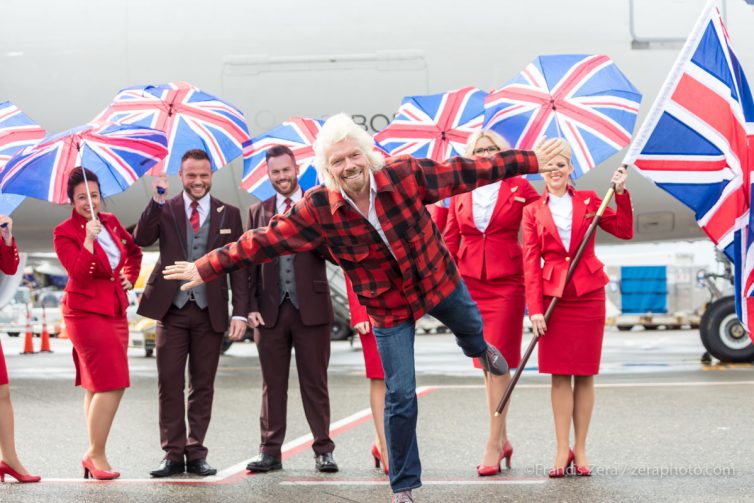
Getting ready for some long-haul flying, a 787-8 is at the gate with a 777-200 domestic in the background.
Domestic aviation in the western United States is a different operation than the population-dense East Coast. With major cities often 1,000 miles apart, often the only way to get between them in less than a day is to fly. Over the years, air traffic to the three largest Mountain West cities – Denver, Phoenix, and Salt Lake City – has increased significantly as the importance of these markets has elevated through sustained and continued growth.
United Airlines has been a dominant force in Denver for many years, with an 80-year history that reaches back into the early years of commercial aviation. It is currently, and by a wide margin, the largest carrier in Denver by passenger enplanements, flights, and revenue.
United’s focus on Denver is no accident; the airport is its most profitable hub, a key part of its route network, and is a focus for continued growth within the airline. As a frequent traveler based in Colorado, I’ve wanted to explore and learn about how United Airlines uses its position in Denver to get people to their destinations, nationwide.
This is the first part of a two-part feature on United Airlines’ operations at Denver International Airport. The second part will cover United’s inaugural 787-8 Dreamliner service to London Heathrow as an example of how United is expanding the reach and prominence of Denver within its network.

Norwegian 787 taxiing at Seattle-Tacoma International Airport
High risk, high reward. That’s how I viewed my booking on Norwegian. They recently started serving Denver, Colorado (DEN) from London’s Gatwick Airport (LGW) using their ever-expanding fleet of Boeing 787 Dreamliner aircraft. The one-way, one-stop fare from my family vacation in Copenhagen was only $600 per person in their “Premium” cabin – a steal for holiday travel.
Why did I need a one-way fare? I had used United miles to book my family from Denver to Copenhagen (via SFO) on Christmas Day. 30,000 miles per person for a pretty convenient one-stop routing on United and SAS was too good to pass up. But it made getting home a challenge. That’s one of the things that drew me to Norwegian. Also, we’re not exactly rolling in international service here in Denver. Norwegian is a new player, and I wanted to try them out.
For some reason, international travel has not reached the same parity as domestic U.S. travel when it comes to one-way fares. Piecing together an itinerary in the states is pretty easy, but just try booking a one-way flight from London to Denver. Norwegian is disrupting that model with its a la carte approach to everything, as are its long-haul international competitors such as WOW and Icelandair.

Lovely weather in London right before boarding – Photo: Blaine Nickeson | AirlineReporter
So, why high risk, high reward? Norwegian only flies to Denver three times per week. They also don’t interline with other carriers. So, when things go bad (delayed/canceled flights) they go really bad. I knew not to expect to be booked on another carrier if things went wrong. I had a backup plan in case we got stuck in London (there are worse places to be stuck), but we were lucky that our travel was flexible.
So, how was the trip? Did I win the gamble? Read on…

AF 787-9 Dreamliner – Photo: Alastair Long | AirlineReporter
As far as airline journalism gigs go, I hoped that this would be a beauty. And it did not disappoint. I missed an opportunity to visit the Air France (AF) CDG hub experience in November 2015 due to a lost passport. However, AF gave me a second, even juicier, bite of the cerise with an invitation to try its business class product on board the airline’s recently arrived Boeing 787-9 Dreamliner. We would fly out from London Heathrow (LHR) to Paris Charles de Gaulle (CDG) on 23 March 2017. You’d perhaps be forgiven for raising an eyebrow seeing a long-haul bird deployed for a painfully short 45-minute hop over La Manche.

Sir Richard Branson inaugurated Virgin Atlantic service to Seattle in his inimitable style
On the heels of Alaska Airlines’ announcement that it will soon do away with the Virgin America brand, after having purchased the airline last year to the tune of $2.6 billion, Virgin Atlantic inaugurated daily service from London to Seattle on March 27.
-

-

-
Virgin Atlantic’s daily service from London to Seattle will make use of the airline’s fleet of Boeing 787-9 aircraft.
-

Branson had publicly opposed the merger, but as a minority shareholder of Virgin America, there wasn’t much he could do. The new route will allow the Virgin brand to retain a presence in the Pacific Northwest, and perhaps help to restore a bit of Branson’s entrepreneurial dignity. The route had been announced last year, not long after news first broke about the sale of Virgin America to Alaska Airlines.

An airport worker opens a cargo door on Hainan Airlines’ Kung Fu Panda 787-9
A group of 97 students from Lincoln High School, in Tacoma, Wash., recently traveled to China at the invitation of Chinese President Xi Jinping, which is pretty awesome.
What’s even more awesome for AvGeeks was the aircraft that Hainan Airlines selected for the students’ return flight to Seattle-Tacoma International Airport (SEA): a shiny new 787-9 decked out in a new Kung Fu Panda livery.








